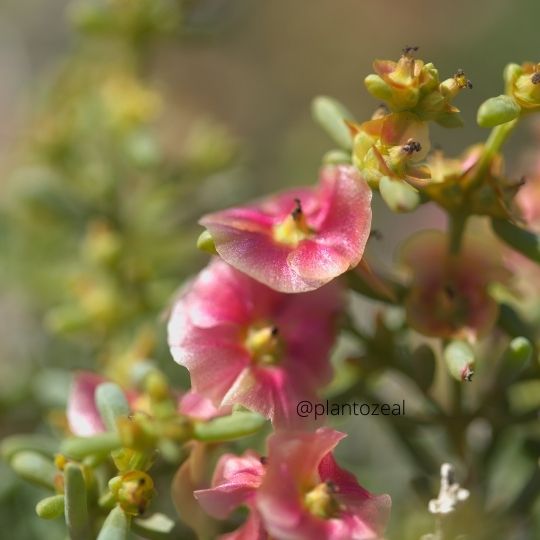Salty soils can cause problems for vegetation that isn’t tolerant of high amounts of salt. Sandy soils close to beaches retain less water than soils that are less porous. Additionally, salt
spray from the wind can cause plants to not absorb water properly. Salt damage can cause leaf burn, leaf death, and leaf drop. The Salt-tolerant plants are the best choice for homeowners who live near salt mines or in salty regions. There are 9 salt-tolerant plants, including annuals, shrubs and trees and perennials. These salt tolerant plants do not react to salty brine on the ground.
1. Coleus (Plectranthus scrtellarioides): salt tolerant plants
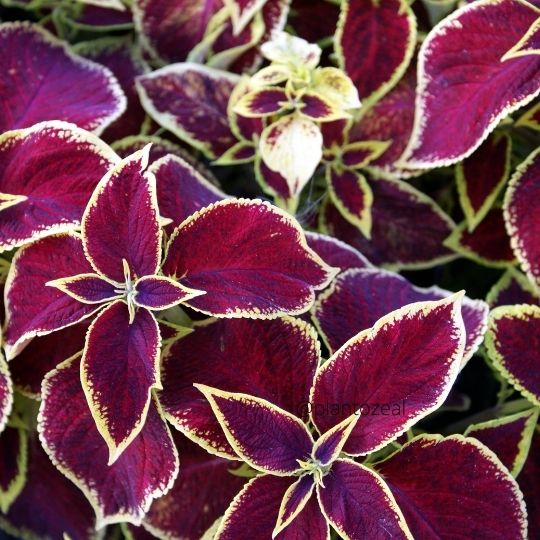
Coleus plants are shorter, more common bedding and salt-tolerant plants that produce tiny flowers. However, Coleus is prized for its unique patterns and colors. The plant can adapt to most environmental conditions, making it suitable for salty environments. Coleus, a tropical plant, is resistant to frost and prefers to be kept indoors in pots during winter. Animals are not able to tolerate fast-growing coleus plants .
Sunlight: Part to full shade
Soil: Rich, moist, loose Flower Colors: Blue and white (insignificant).
Mature Size: 6-36in. Tall and wide
Deer Resistant: Yes
2. Ivy Geraniums (Pelargonium peltatum)
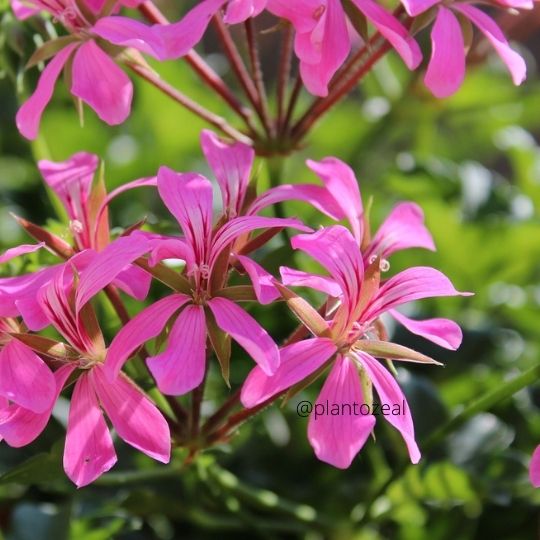
Ivy geraniums plants are low-maintenance and easy to grow in warm weather. These salt-tolerant plants have prolific flowers. They come in many colors and are often used as annual hanging baskets for northern areas. It can withstand salty winds and strong winds. Which may be detrimental to plants in coastal areas. Ivy Geranium plants can tolerate average humidity. However, if you live somewhere with extremely hot summers. Choose a heat-resistant variety of ivy.
sunlight: Full Sun
Soil: Moist: well-drained
Mature Size: 12 to 30 in. tall
Flower Colors: Pink red salmon and white
Deer Resistant: Usually
3. Bayberry (Myrica pensylvanica):
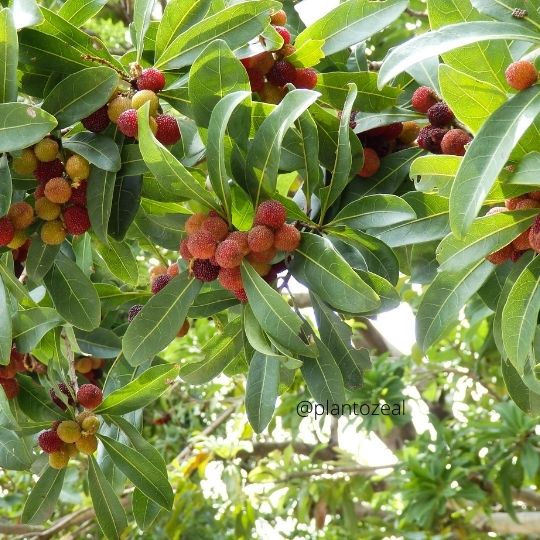
Bayberry shrubs are well-known salt tolerant plants . These are famous because soaps and candles are made from berries. They can tolerate shifting sandy soils or salty conditions. It thrives in wet, dry, and even boggy environments. The silvery-colored berries are a prized asset that can withstand freezing temperatures. This plant provide a delicate texture to winter landscapes. Dense shrub can grow quite tall if it isn’t kept under control. Flower Colors: Yellowish-green.
Sunlight: Full Sun, Part Shade
Soil: Dry to moist, well-drained
Mature Size: 10 ft. tall
Deer Resistant: Yes
4. White Oak (Quercus alba): salt tolerant plants
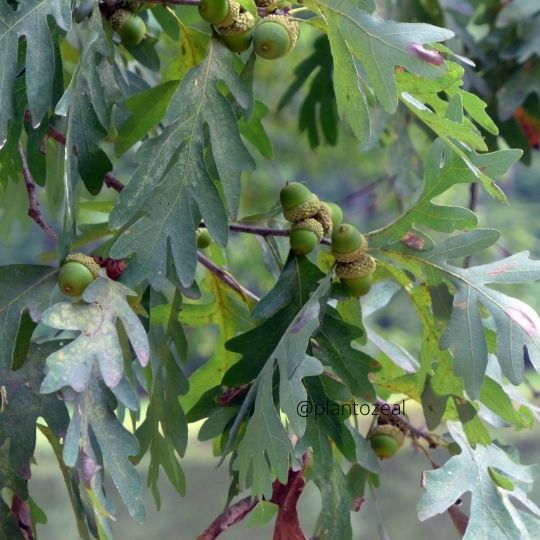
White oaks are majestic tree that is popular in Eastern North America. They are salt-tolerant plants that have short trunks and limbs that reach far. Their crowns are rounded. This type of plant is a beneficial tree and can support all kinds of wildlife. The white and red oaks are more durable than other oaks. These are more adaptable and pollutant-tolerant than ” street trees”. It must also withstand salty winters. Sunlight: Full Sun
Soil: Rich, moist and well-drained loamy
Flower colors: Yellowish-green
Mature Size: 60-100 ft. tall, 50-90 ft. wide
Deer Resistant: No
5. Red Oak (Quercus Rubra): salt tolerant plants
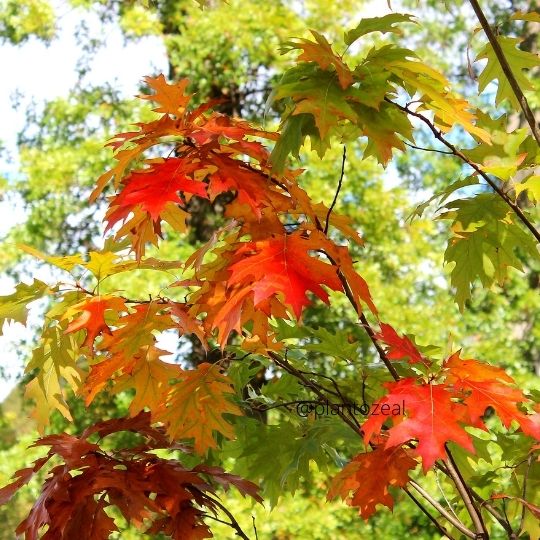
Although red oaks salt tolerant plants and look similar to pink oaks. They require large areas of space to grow large enough to support their shade canopies. The fall color of red oaks is spectacular with their bright, deep red leaves. Red oaks can be used to line streets and parks entrances. These are exposed to winter slurry, due to their tolerance to pollution and salt.
Sunlight: Full Sun
Soil: Fertile sandy, dry, well-draining
Mature Size: 50-75 ft. tall, 50-75 ft. wide
Flower Color: Yellowish-green (insignificant).
Deer Resistant: No
6. Virginia Creeper Vines (Parthenocissus quinquefolia)
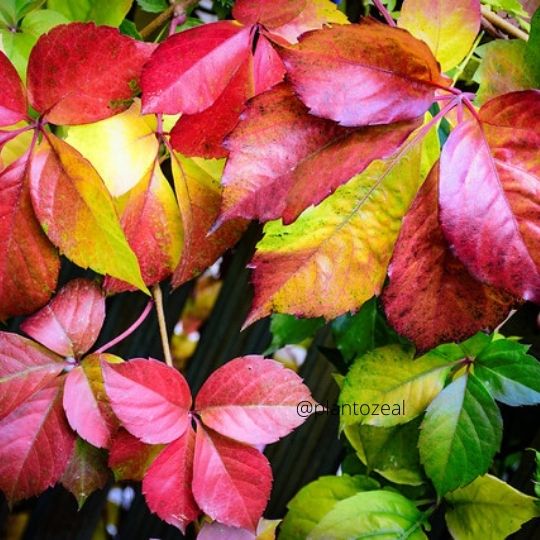
Virginia creeper is tough, aggressive and native to North America. It can tolerate all soil types and is able to withstand the harshest winters. Therefore, even roadside slush will not harm its return in spring. It’s a great vine for fall color, as the leaves turn reddish. These salt tolerant plants are vine that loves to grow and stick on the sides of buildings. These salt tolerant plants are toxic to humans and are used to control erosion.
Flower Colors: Greenish-white
Sunlight: Full Sun, Part Shade
Soil: Sandy, clay, or loamy
Mature Size: 30-50 ft. long
Deer Resistant: No
7. English Ivy (Hedera helix):

English ivy is an evergreen climber and groundcover that is considered as invasive plant. English ivy is toxic to animals and humans . Planting English ivy is a good idea in salty regions. Its dense, strong and almost indestructible carpet of tiny, emerald green leaves can reduce hill erosion. These salt tolerant plants are hardy, and drought-tolerant. They are found in coastal areas. It can also survive near roadsides that have been soaked in winter’s salty brine.
Sunlight: Partial or full shade
Soil: Fertile, moist
Mature Size: 6-8in. tall, 15 ft. wide
Flower Colors: Greenish (insignificant)
Deer Resistant: No
8. Lilyturf (Liriope spicata): salt tolerant plants
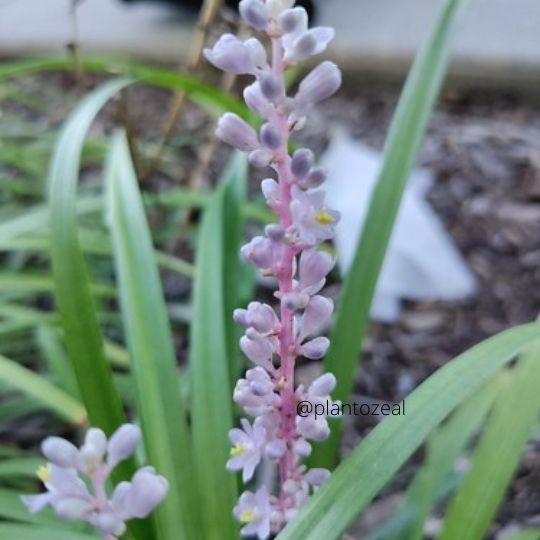
Lilyturf is a perennial that belongs to the Asparagaceae (asparagus) family. It is an evergreen tufted or rhizomatous ornamental groundcover.
English ivy can be an invasive plant so you should use lilyturf to cover the ground. These are tough, drought-tolerant and salt tolerant plants also. They can be used to control weeds as well as erosion. Lilyturf spreads quickly and produces a dense carpet of flowering grass-like turf. Sunlight: Partial Shade
Soil: Sandy, well-draining
Mature Size: 9-18in. tall, 12-24 in. spread Flower Colors: Lavender, and white
Deer Resistant: Yes
9. Moss Rose (Portulaca grandiflora)
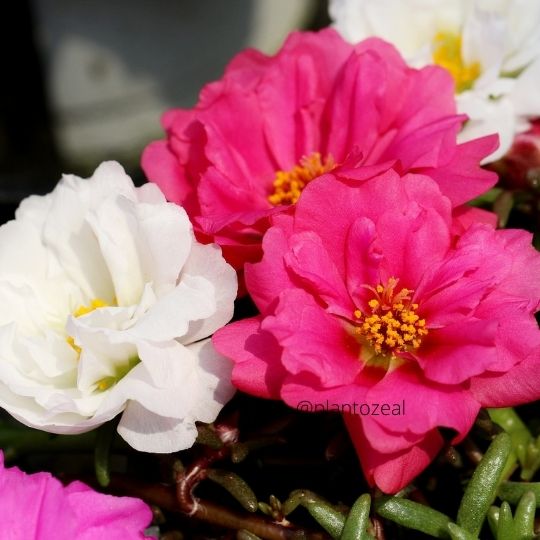
Moss rose is a hardy, drought-tolerant creeping perennial that comes in many colors. This succulent grows to a height of just a few inches, but it spreads along the ground. The plant’s toughness makes it ideal for salty environments. However, the flowers are delicate with tiny rose-like petals. These cute flowers of salt tolerant plants are toxic for cats.
Sunlight: Full
Soil: Sandy, well-drained
Mature Size: 3-9in. tall, 6-24 in. Wide Flower Colors: White, yellow, red and pink
Deer Resistant: Yes
FAQs
There are many plants which can tolerate salt and successfully grow in salty regions. Some of them are listed below.
- Coleus (Plectranthus scrtellarioides)
- Ivy Geraniums (Pelargonium peltatum)
- Bayberry (Myrica Pensylvanica)
- White Oak (Quercus alba)
- Red Oak (Quercus Rubra)
- Virginia Creeper Vines (Parthenocissus quinquefolia)
- English Ivy (Hedera Helix)
- Lilyturf (Liriope spicata)
- Moss Rose (Portulaca grandiflora)
The plant absorbs salt in the soil and stores it in bladder shaped cells on its leaves. This preserves the plant’s salt-sensitive metabolic processes and allows it to grow even in saline soils.
English Lavender – Not really salt-tolerant but lavender prefers sandy soil or rocky soil. Because of this preference, lavender is often grown in coastal areas. It can withstand windy weather!
